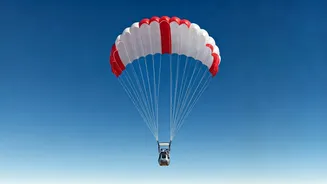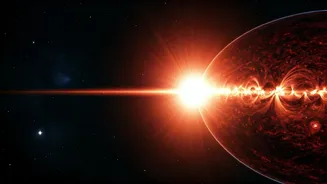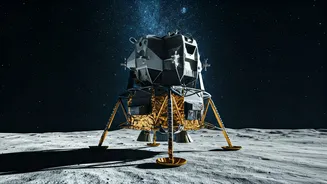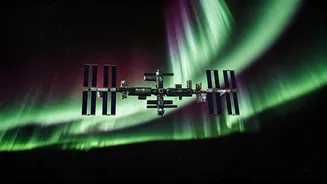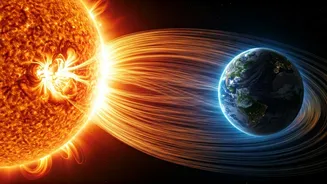Solar Flare Action
A significant solar storm, distinguished by pronounced coronal mass ejections, posed a threat to astronauts on the ISS. The solar flares, which emanated
from the sun, are known for emitting high levels of radiation that can jeopardize the health of those in space. Astronauts were immediately instructed to relocate to areas within the ISS designed to provide optimal protection from solar radiation. The necessity for these safety measures demonstrated the critical need to safeguard the crew from potentially harmful effects of space weather. This incident serves as a reminder of the dynamic nature of space and the ongoing efforts required to shield astronauts from its unpredictable elements.
ISS Safety Protocols
The ISS features shielded zones designed to mitigate the risks associated with solar radiation. When a solar storm is detected, astronauts are required to move into these designated areas. The process involves transferring to specific modules, which are constructed with materials that serve as barriers to the penetration of harmful radiation. The objective is to lessen radiation exposure to a safe threshold. This proactive response showcases the dedication of space agencies to prioritize astronaut welfare. The implementation of such protocols also indicates the comprehensive preparation and meticulous planning essential to guaranteeing astronaut safety amid the challenging conditions of space.
Protecting Human Health
Exposure to elevated levels of radiation can be hazardous to human health. Radiation exposure in space poses risks to astronauts, potentially leading to immediate effects, such as radiation sickness, as well as prolonged consequences, including increased cancer risk. The measures taken during the solar storm reflected the critical importance of mitigating the health risks linked with space travel. The actions taken by the crew underscored the need for monitoring space weather and executing proactive protective measures. Such practices are integral to the ongoing efforts aimed at safeguarding astronauts and ensuring the feasibility of extended human presence in space.
Space Weather Impacts
Solar flares and CMEs are forms of space weather capable of influencing technological systems on Earth and in space. These events can disrupt communications, affect satellite operations, and potentially damage electrical grids. The incident on the ISS highlighted how space weather can directly impact human space missions. Space weather forecasting and predictive capabilities are continuously evolving to enhance preparedness. These advancements are aimed at providing timely warnings, which will assist in the implementation of protective measures. This is critical for both spacecraft and terrestrial infrastructure. The ongoing research and development in this area are designed to boost the reliability of space operations while reducing potential risks.
Ongoing Monitoring Efforts
Scientists and space agencies constantly observe the sun and the space environment to forecast space weather. Satellites and ground-based observatories continuously collect data. These data are used to monitor solar activity. The information acquired helps in creating predictive models to assess the potential for space weather events. When a solar storm is detected, the information is communicated to all relevant parties to activate safety protocols. This continuous monitoring and sharing of information highlights the worldwide dedication to ensuring the safety of those in space. It also reflects the collaborative spirit that characterizes space exploration.


